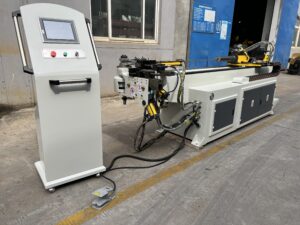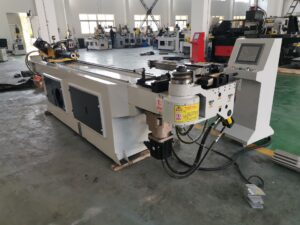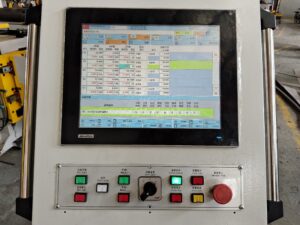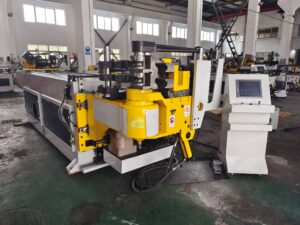What Is the Advantage of Using a Pipe Bender?
When considering the efficient manipulation of metal pipes in industrial applications or custom fabrication shops, one must understand the advantage of using a pipe bender. Whether for complex industrial pipework, custom automotive projects, or advanced architectural metalwork, the technology behind a pipe bender introduces significant improvements in accuracy, speed, and safety over more traditional pipe-forming methods.

1. Understanding the Advantage of Using a Pipe Bender
1.1 Historical Context: From Manual Bending to Mechanized Precision
Before the era of mechanization, pipe bending was primarily executed using manual methods or rudimentary tools that required significant expertise and physical labor. These methods posed challenges in maintaining consistent angles, curves, and overall accuracy. Today, the modern pipe bender not only automates the bending process but also integrates sophisticated control systems that repeat precision curves, eliminating guesswork entirely.
Historically, the advancement from hand bending to advanced mechanical benders has transformed industries:
- Reduced Human Error:
Manual pipe bending is susceptible to inconsistencies caused by operator fatigue or misinterpretation of design specifications.
- Increased Production Output:
Mechanized benders produce a higher volume of accurately bent pipes per hour compared to manual methods.
- Enhanced Safety Parameters:
Contemporary machines are designed with built-in safety features that protect operators and reduce the risk of accidents in the workplace.
1.2 Defining Pipe Bending in a Technical Context
A pipe bender is a piece of equipment used to shape pipe segments into any required angle or curve without compromising the structural integrity of the metal. While bending might seem like a simple task, various factors must be balanced to avoid issues such as kinking, wrinkling, or thinning of metal walls. Today’s pipe benders integrate hydraulic, electric, and sometimes digital control systems that allow adjustments in real-time depending on factors such as pipe diameter, wall thickness, and bending radius.
The primary advantage of using a pipe bender lies in its capability to:
- Maintain Precision: Automated systems control the bending process with a level of precision unattainable by hand.
- Ensure Consistency: Every pipe cycle is replicated with exacting detail, ensuring that each bend conforms to the pre-set parameters.
2. Technical and Economic Advantages of Modern Pipe Benders
2.1 Enhanced Precision and Control
Precision is paramount when bending metal:
- Accuracy:
State-of-the-art pipe benders can achieve bending tolerances as tight as ±0.5 degrees, which is crucial when pipes are destined for high-pressure or critical structural applications.
- Consistency:
The digital control of bending angles ensures that each component meets specifications exactly. This reliability reduces rework and product rejection rates in manufacturing.
2.2 Increased Production Speed and Efficiency
One of the most frequently cited advantage of using a pipe bender is the significant boost in productivity it offers. Mechanical bending machines can bend pipes at speeds that far outpace manual labor:
- Faster Setup Times: Modern machines come with programmable settings, allowing operators to set up the machine for a particular pipe size or bend angle quickly.
- Reduced Cycle Times: Automation minimizes downtime between bends, meaning more pipes can be produced in a shorter period.
- Operational Flexibility: Some advanced models can switch between different bending profiles automatically, accommodating a range of pipe sizes and configurations in one work shift.
This efficiency is especially important for large-scale operations where production deadlines are strict, and downtime directly impacts the bottom line.
2.3 Material Savings and Reduced Waste
The capacity to achieve precise bends has direct material implications. The advantage of using a pipe bender extends into conservation of raw materials:
- Minimized Scrap Rates: With high precision comes a lower probability of errors, meaning less metal is wasted on misbends or unusable segments.
- Cost Savings: Lower scrap rates directly translate to reduced costs for manufacturers, particularly when dealing with expensive metals like stainless steel or specialized alloys.
- Environmental Impact: Efficient use of materials is not only economically beneficial but also aligns with sustainable practices by reducing the environmental footprint of manufacturing operations.
Industries that rely on custom metalwork, such as aerospace or high-end automotive manufacturing, benefit hugely from such efficiencies. Reduced waste coupled with high-output ensures that operations remain both cost-effective and environmentally responsible.
3. Innovations and Technological Trends in Pipe Bending
3.1 Integration with CNC and Automated Systems
One distinguishing trend in modern pipe bending is the integration of Computer Numerical Control (CNC). The benefits include:
- Digitized Programming: Operators can program precise bending patterns and replicate the same design repeatedly, which is ideal for mass production or highly technical projects.
- Real-Time Monitoring: CNC systems offer live feedback on bending parameters, ensuring that any deviation from the set process can be corrected immediately.
These systems not only make the bending process more efficient but also reduce the learning curve for operators, who can now handle complex tasks with the support of advanced digital interfaces.
3.2 The Role of Software and Simulation
Modern pipe benders leverage simulation software to pre-visualize bending outcomes. This is especially critical for:
- Design Validation: Engineers can pre-test pipe bend profiles to ensure they meet standard design criteria, reducing the risk of costly errors during production.
- Process Optimization: Simulations help identify the most efficient sequence of actions needed for a series of bends, minimizing machine wear and tear and optimizing cycle times.
Through the integration of such software, many companies find that the advantage of using a pipe bender extends not merely to the physical action of bending but also to the strategic planning and quality control of the entire fabrication process.
6. Case Study: Transforming Pipe Production in an Industrial Fabrication Plant
6.1 Background and Challenge
Consider the real-life example of an industrial fabrication plant specializing in custom piping systems for petrochemical facilities. The company had historically relied on manual bending methods, which presented several challenges:
- Inconsistent Bends: The manual process led to variances in bend angles, creating issues during assembly.
- Increased Scrap: A significant percentage of bent pipes had to be discarded due to minor defects that caused leaks or misalignment.
- Labor-Intensive Process: The manual method was slow, leading to delays in meeting tight project deadlines.
6.2 Implementation of a Modern Pipe Bender
To address these challenges, the plant invested in a state-of-the-art CNC-controlled pipe bender. The transition involved:
- Employee Training: Operators were trained to use the machine efficiently, focusing on the new digital interface and safety features.
- Process Re-engineering: The plant re-engineered its workflow to incorporate the automated machine, reducing the time between successive pipe bends.
6.3 Results and Outcome
The transformation at the manufacturing plant was remarkable:
- Productivity Increase: The production pace increased by nearly 40%, allowing the plant to handle larger orders without compromising on quality.
- Quality Improvements: The percentage of defective or scrap pipes dropped by over 60%, significantly reducing waste and saving costs.
- Enhanced Worker Safety: With the machine handling the heavy bending process, job-related injuries decreased markedly, and employee satisfaction improved.
The industrial fabrication plant’s success story stands as a testament to how modern bending technology can revolutionize traditional manufacturing processes.
For more information, please click here



